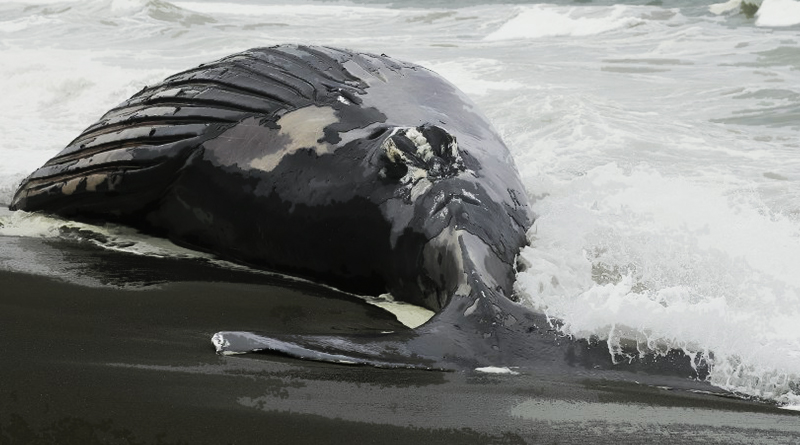Many of us remember going to see the Tay Whale skeleton on display in the McManus, but do you all know the story behind the incredible chase? It was November 1883 when the 40ft humpback whale first appeared in the Firth of Tay, just off the shore of Dundee. Whaling was big business in Dundee at that time and with it being winter, all the whalers, their ships and equipment were in harbour. Not able to resist such a bounty right on their doorstep, many whalers set out to hunt the beast.
After several failed attempts, on 31st December the whale was finally harpooned in the neck. Two rowing boats joined the steamboat that had harpooned the whale to create more drag and to slow the speed of the whale. Not seeming too bothered by this the whale continued to slowly and calmly swim down the river, dragging the boats closely behind him.
After passing Broughty Castle, another boat pulled ahead and lodged another harpoon into the animal, and this time the whale was not happy. It made desperate efforts to free itself, lashing furiously with its tail and darting everyway it could as fast as possible. Great crowds gathered to watch the spectacle, around 2,000 watched from along the esplanade and many boats followed the chase in the river. Once darkness set in however, the boats lost sight of the whale and the four ships attached by harpoon line were dragged out to sea.
As it was dark and no other boats could be summoned to help, the hunters now found themselves unable to do anything other than be dragged by the whale, and hope for its injuries to overcome it. All through the night, and into new years day of 1884, the four ships were dragged all the way up the coast to Montrose, back down to the Firth of Forth, and then back up the coast again towards Dundee. The winds were howling and the whale was moving erratically and thrashing, all adding to the strain of the harpoon lines. The hunters tried to fire iron bolts and marlinspikes to accelerate its death, but the strain finally made the harpoon lines give way and the whale broke free and swam out to sea. Large crowds had gathered at the harbour and after finding out the whale had escaped an air of disappointment was felt, by none more so than the hunters who had failed in their chase.
A week later, the whale was found dead and floating out at sea near Stonehaven, still filled with the harpoons, iron bolts and other projectiles of the hunters. It was towed back to land and sold at auction, bought by local entrepreneur John Woods, a worthy also known by the name ‘Greasy Johnny’. He was determined to make a fortune out of the spectacle, which had drawn thousands of spectators in the chase, and in the sensational press that followed. On the first Sunday that it was exhibited 12,000 people paid to see it.
Outbid at the auction of the whale was Professor John Struthers, an anatomist from Aberdeen. Struthers wished to dissect and examine the anatomy of the whale, and after the whale had decomposed to the point where it could no longer be publicly displayed, and make money for Greasy Johnny, Struthers was invited to dissect the remains. Not one to miss an opportunity for a quick buck, Johnny charged a special fee to observe the dissection and even added background music by the 1st Forfarshire Rifle volunteer’s band. Professor Struthers complained that these distractions adversely affected his work, and the state of the by now well-decomposed whale didn’t help matters. His assistants were wading knee deep in the putrid mass of the viscera and muscles that were liquefied and poured out of the incisions.

Struthers removed most of the bones except for the skull, and made a very detailed examination, which can be read online for any of you interested in whale anatomy! Greasy Johnny was at the ready again to make his money, and after introducing a wooden backbone, the whale was stuffed and stitched back to its original form. The stuffed whale was then taken on a grand tour, visiting Aberdeen, Edinburgh, Liverpool, London and Manchester before returning to Dundee on 7th August. Professor Struthers completed the removal of the skull and the skeleton was now completely removed and able to be assembled and re-articulated.
While Greasy Johnny no doubt made huge profits from the publics interest in the whale, he did refuse several large offers for the whale skeleton to keep his promise made earlier to gift it to the city of Dundee. It was moved to the Albert Institute, now the McManus, where it has remained a centrepiece and talking point for generations.
The great spectacle of the chase and capture of the whale caught the interest of the whole town but was immortalised in the words of the worlds worst poet, our beloved local bard William Topaz McGonagall, in his poem “The Famous Tay Whale”. While factually accurate, like most of McGonagall’s poems it has been remembered more for the appalling quality of the poetry, rather than the content.
Instead of simply reading the words, the best way to experience this majestic work is in this performance by the Harvard and Princeton glee clubs. The poem has actually inspired several works of art and music based on it, so people are still profiting off the interest in this great beast even today.
– DD Tours operates walking tours in Dundee city, covering dark local history such as wars, battles, murders, diseases, riots, disasters and executions. Walk with us for an unforgettable storytelling experience.
OR

